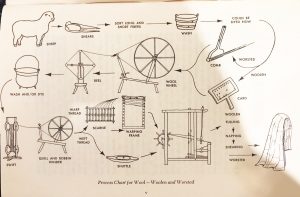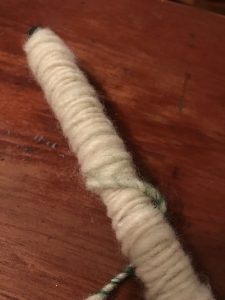On Monday evening I attended my first class on wool spinning at Arbutus Folk School. To start the class, we went over the basics of protein fibers and discussed the various different methods of processing and prepping the fibers for spinning. This being my first time actually interacting with wool and a drop spindle, I was actually incredibly surprised by how much knowledge I had retained from the reading I have been doing on the subject over the past couple of weeks.
I did, however, learn quite a few new concepts that I will list here:
- When spinning, there are two different kinds of spinning techniques: the “Z Twist” and the “S Twist” (Basically clockwise and counter clockwise)
- When plying, you must spin in the opposite direction that the wool was spun in
- When buying “roving” (cleaned and carded wool) you should look for fiber that has a staple of at least 3 inches, anything less than that probably is not worth your money
- Good fleece makes a “ping” noise when you hold it up to your ear and tug
- Just like humans, wool producing animals exhibit health issues in their fleece, so an animal that has undergone a hard winter, pregnancy, stress, etc will have sections that break when tugged
We then went through the life cycle of wool and what steps need to be taken in order to create spun wool most efficiently. This is exhibited in the diagram Emily showed us from the book “Textile Tools of Colonial Homes”

Finally, we got to spinning our first wool. We began by “pre-drafting” the roving we were given. We did this by gently pulling the roving apart in order to create a thinner, longer piece. This is done in order to make the spinning process go a bit quicker and smoothing.
After that, the act of spinning itself was actually surprisingly intuitive. It was comprised of using the drop spindle as sort of weight that lead the twist and pinching of the roving at certain points in order to control the width of the wool. I’m really pleased with my first attempt at spinning:

At the end of class, we were given some roving to practice with and the homework assignment to spin 4 nights out of the week and to spin all of the materials we were sent home with. Next week we’ll learn how to ply our yarn so that we can have a finished product.